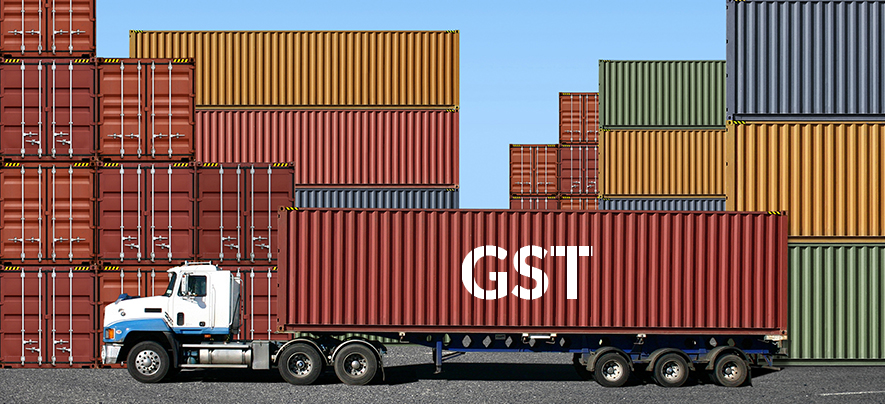How GST will impact various industries

GST
408 week ago — 6 min read
The Goods & Services Tax (GST) is a single system taxation for Indirect Taxes in India. GST will affect different industries in different ways. Here is a summary of the impact GST on various industries.
IT & ITeS
Currently IT & ITeS (Information Technology enabled Services) industry is paying 14 per cent of tax to the authority and will be subjected to 18-20 per cent after the imposition of GST. Also an important point to note is that the long disputed issue of canned software taxation will also come to an end as their will be no difference between goods and services after the GST. Overall impact here could be neutral or slightly negative.
Telecom
At present, the Telecom sector is paying 14 per cent of tax to the governing body, but the scenario will shift after the imposition of GST. The expected rate of tax will rise to 18 per cent and companies would expect to pass the burden on the postpaid customers. There will also be a lower input tax credit in this sector’s capex cost. Overall, it seems that this regime will be negative to the industry and the sector will also be in a state where they can’t pass all the tax burden to the consumers.
Automobiles
Currently, the automobile sector pays around 30 to 47 per cent of tax to the Indian government which is now expected to range between 20-22 per cent, after the implementation of GST. Overall cost-cutting can be expected for the end user of around 10 per cent. Transportation time should also be reduced as the check points and octroi is cleared before. Overall GST, will bring a smile to the automobile sector.
Consumer Durables
This sector will typically be neutral or negative for the companies who were enjoying tax exemptions before and falling under any concessional tax bracket. On the other hand, it will be beneficial for companies who were not exempted from any tax scheme before. The 7th pay commission will also give demands to the sector and warehousing will see a certain boost in their profitability by 300-400 bps.
FMCG
Here again, the scenario will be either neutral or negative for those companies who fall under any concessional tax bracket or are taking some kind of exemptions. The companies who are likely to get any benefit would be Havells, Blue Star, Bajaj Electricals, Symphony, Hitachi etc.
Furnishing & Décor
Currently, the sector pays above 20 per cent of its share to the tax authority, and the organised sector is composed of 65-70% of the total. The main agenda is to narrow down the tax liability of both organised and unorganised sectors and to give more opportunities to the organised sector for being more loyal to the tax authority.
Logistics
On studying the sector, the findings show that there are many unorganised players who evade tax therefore creating a cost gap. After the implementation of the GST, the organised players get more cost effective and would be enjoying the benefits of a large set-up. Also, the interstate flow of goods would accelerate demand for logistics services.
Cement
In the current scenario, the cement sector is presenting 27 to 32 per cent of their share to the tax authority. After the rolling out of GST, this will improve the sector in various terms. Rationalisation would be easy in terms of state wise fragmentation and also in the transportation cost as reduced transit time.
Textiles/ Garments
Currently, the range is 6 to 7 per cent which the sector is paying. Somehow there is no idea about the impact of GST on this sector but the output tax rate high reason will be negatively impacted. Therefore, various export companies will get some extra benefit from the duty drawback from the new GST implementation.
Pharmaceutical
Here, the impact could be neutral as the sector only shares 6 per cent of its share to the tax authority. The sector also avails the incentives in tax benefits based on location. There are various concessional benefits and exemptions held for this sector and will extend till the expiry of the period. The implications of GST would also try to reduce the logistics cost and would also try to see in to the matter of inverted duty structure.
Metal
This sector is a total unknown. But, the sector is currently paying 19-21 per cent of tax to the tax body, with 4 to 5 percent of VAT in particular state, Excise duty of 12.5 per cent and CST 2 per cent with variable entry taxes in particular states.
Banking & Financial Institutions
The sector is paying 14 per cent right now, but not on the interest part of transaction. After the GST is implemented, the tax horizon can expand up to 18 to 20 percent on the fee-based transactions. Overall input expense of operations will likely increase and there will also be a hike in the transactions of financial in nature such as loan processing fess, debit/credit charges, insurance premiums etc.
To explore business opportunities, link with me by clicking on the 'Invite' button on my eBiz Card.
Network with SMEs mentioned in this article
View Elangovan 's profile
Most read this week










Comments (2)
Share this content
Please login or Register to join the discussion